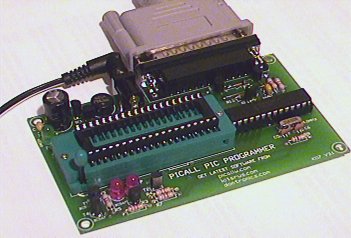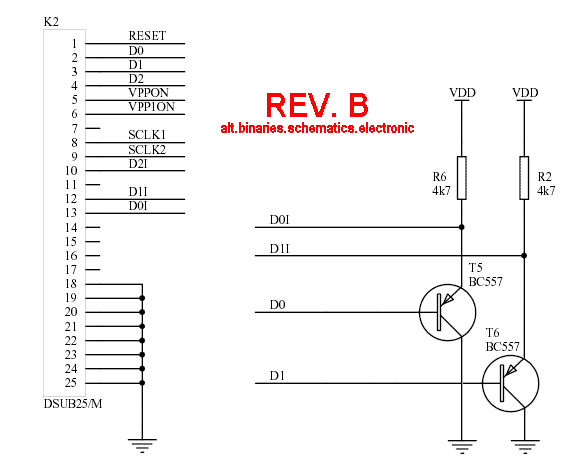PICALL Programmer v3.1 - LPT Port Modification (Advanced)

What to do when all the criteria are met, but communication from the PC to the programmer absolutely cannot be established:
1. If you have access to a TTL logic probe, connect its black clip to the right-hand side of R3 (ground) and the red clip to the top of R2 (Vdd), careful not to short out any other pins.
2. Test the bottoms of R6 and R2. If EITHER of them do not register as H or L, then they are "floating" and the problem is your parallel port cannot drive the D0/D1 lines low enough. All parallel ports are NOT created equal.
3. If you don't have a TTL logic probe, you can take a voltage measurement from ground to the bottoms of R6 and R2 instead. If the voltage measured is >1v or <4v, then proceed with the changes below.

1. Remove D2 and D3. Reflow the solder on the pads, leaving a small bubble there (we'll need this later.)
2. Obtain two BC557 or 2N3905 PNP transistors. From the front, the BC557's pins are C, B, E. The emitter is the pin with the arrow, it points to the base.
3. Looking at the front, very carefully bend the collector to the left, 90 degrees. Bend the emitter forward 90 degrees and the base backwards 90 degrees, so the pins are all flat and pointing out. This becomes the "D2" transistor.
4. Bend the other transistor's base and emitter leads in reverse from step 3. Follow the arrows on the PCB.
5. Trim the leads of the transistors so they will fit as shown. Quickly tin the exposed leads, waiting 10 seconds between each.
5. Carefully scrape some of the insulation off of the trace that runs under D2, where the "D2" collector will be soldered (this is ground.) Tin it quickly, using ample flux.
6. Get a pair of tweezers. Position "D2" in place so that the collector is resting on the tinned ground trace and just touch it with the iron and it should stick. Now gently line up the other two leads and "tack" them in place on the D2 pads. Then, using a little more flux, lightly touch each joint, waiting 15 seconds between each.
7. Do the same with "D3". Use a spare resistor lead or piece of wire to join this collector with the grounded collector.
That's it. Now plug in power, plug in the DB25, and run the communications test. It should pass the cable check. Now unplug everything and add the 16C62B and try the other tests.
Have fun!
Mark Jones
Helios Studios

